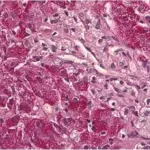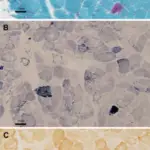Tay-Sachs disease is a rare, neurodegenerative disorder in which deficiency of the enzyme hexosaminidase A which results in excessive accumulation of gangliosides in the brain and nerve cells.
What is the Pathology of Tay-Sachs Disease?
Etiology: The cause of Tay-Sachs disease a mutation in the hexosaminidase subunit alpha (HEXA) gene.
Genes involved: Tay–Sachs disease results from mutations in the HEXA gene on chromosome 15.
Pathogenesis: Failure to breakdown GM2-ganglioside results in its abnormal accumulation in brain and nerve cells eventually resulting in the progressive deterioration of the central nervous system.
How does Tay-Sachs Disease Present?
Patients with Tay-Sachs disease typically are categorized according to the type of disease. The age range varies between 6 months to 40 years old, and common equally among males and females. The symptoms, features, and clinical findings associated with Tay-Sachs disease include paralysis, startle response, vision issues, and ataxia.
How is Tay-Sachs Disease Diagnosed?
Tay-Sachs disease is diagnosed by enzyme assay to measure the activity of hexosaminidase.
Molecular analysis may be useful. Ophthalmoscopy showing a cherry red macula is pathognomonic for Tay-Sachs disease.
How is Tay-Sachs Disease Treated?
Tay-Sachs disease is treated with supportive care.
What is the Prognosis of Tay-Sachs Disease?
The prognosis of Tay-Sachs disease is poor. Tay-Sachs disease is a progressive disease that gets worse over time.



